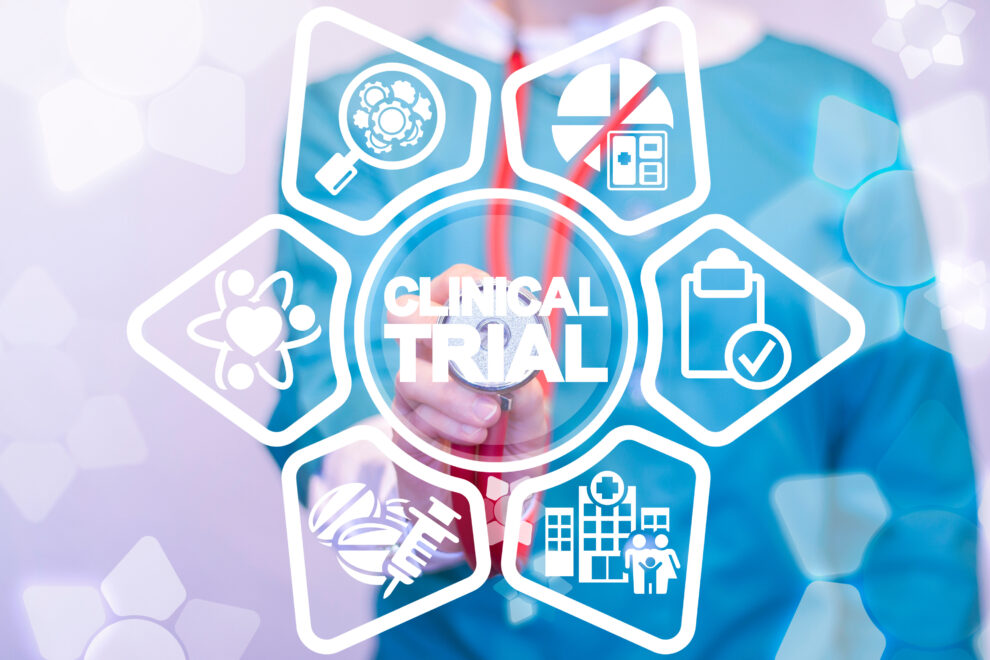Medical innovation in pharmaceuticals, devices, and the integrated technology in patient care is proceeding rapidly in response to pressures brought on by viral mutations, drug resistance, and competition among companies for novel solutions to combat various diseases. Timely solutions will save lives and spell profit for the companies who get to market first. But first, products must pass clinical trials fast to launch successfully and meet critical needs.
Accelerated timelines are critical in the healthcare sector as the impact on lives and economies of disease outbreaks is staggering. Manufacturers are looking at new tools, including artificial intelligence (AI) to improve processes by leveraging what technology can deliver in this digital, data-driven world.
Clinical trials are notoriously long, expensive, and laborious. Can this critical step be completed better and more securely?
Why Use Clinical Trials

Clinical trials play an essential role in evidence-based medicine. It chronicles the journey of the drug from its inception in the laboratory to the clinic and eventual use. The course is monitored closely at every stage for any breach or when the subject’s safety is endangered.
Clinical trials are carefully designed with protocols that meet Food and Drug Administration (FDA) requirements. Clinical trials confirm whether the product under investigation is safe and potentially effective for humans. Doctors can assess the benefits, adverse reactions, and side effects. Clinical studies also provide valuable information on effectiveness, spread, sensitivity, and resistance.
More importantly, when there’s an urgent concern like rapid transmission of infection, the race to discover a vaccine or treatment is almost impossible to arrive at in time were it not for similar studies in the past.
The importance of clinical trials isn’t limited to discovering new therapeutic agents but also finding new ways to use existing, FDA-approved products in other disease states other than that for which it was approved. For example, Ivermectin, an anti-parasitic safely used for scabies and other diseases, had several clinical trials against viral infections.
Repurposing drugs for different indications can occur anywhere from the development cycle to several years after its launch. Remdesivir, a drug found to have reduced the hospital stay of some patients with viral pneumonia, was first used studied as a treatment for Hepatitis C.
Improved Clinical Studies With Digitalization
Ensuring that the information of all patients enrolled in a clinical trial is recorded accurately in the case report forms (CRF) and stored safely is a critical step. The CRF should be complete and accurate to support findings that the drugs are safe and effective. If this is questionable, that particular phase may need to be repeated before proceeding to the next trial stage.
Failure to collect valid results kills the chances of moving forward at a significant cost: the cumulative investment to that point plus the lost time in investigating an alternative one. The delay allows competitors for a similar product to overtake and get FDA approval ahead if their trial is successful.
Shifting from a traditional CRF to an electronic one (eCRF) is a pain point addressed by adopting the appropriate, cost-effective cloud-based technology. Some companies are reluctant because of the initial costs and misconceptions on how this technology can ensure the usefulness and sanctity of data.
Formedix breaks it down by comparing the traditional CRF with eCRF. One significant difference is the data in eCRF is secure. Because access is restricted, any edit or change can be accounted for. Traditional CRF is usually on Excel sheets or its equivalent and is prone to errors, corruption of the program, and manipulation. Using the eCRF puts any question regarding data accuracy, validity, and correctness to rest.
Another misconception is that the eCRF is challenging to use or train for. The contrary is true. The company can create user-friendly and consistent forms with fields designed to collect specific data stored in the cloud. Patient safety is a primary concern at every stage; using the eCRF allows the data to be analyzed for risk versus safety promptly. Being user-friendly and specific ensures that well-designed forms aren’t open to many interpretations and that choices are narrowed down, so there’s little margin for error.
In effect, the eCRF conforms to the following acronym:
- S – secure
- M – measurable
- A- accountable
- R – restricted
- T – timely
These standards ensure the efficiency of the eCRF.
Emerging Field: Clinical Trials In Testing Integrated Technology
Clinical trials have an established role in assessing a single drug, single device, or the interaction of the combined intervention of drug and device. An emerging field aptly termed Technology Clinical Trials goes beyond the scope of previous clinical trials and investigates how the patient benefits from the innovation within an optimized delivery system.
Unlike drug trials where the drug sponsors are responsible for the clinical trials in the hospital setting, they’re unable to modify any hospital process. The same holds for medical devices manufacturers. Medical teams are too busy and aren’t an ideal resource to run the technological trial.
An impartial research group not associated with the drug sponsor, device manufacturer, or medical team is in the best position to impartially investigate how to optimize new care pathways involving all the elements of patient care within the hospital system.
One such pioneering group, the digital Experimental Cancer Medicine Team (digital ECMT) in Cancer Research from the University of Manchester, is conducting technology clinical trials. This group developed the methodology that other research teams could use:
Step 1; Propose care pathways for the identified research topic.
Step 2: Set the clinical trial to test the new care pathways objectively.
Step 3: Disseminate data so that the findings can benefit patients in other settings.
This data can provide the nidus for parallel research to improve patient care.
Conclusion
Successful clinical trials that meet validity criteria with data beyond reproach are urgently needed, especially when community transmission and agent mutation are fast.
The data must be accurate, and the method must meet scrutiny and prove effectiveness for a clinical trial to move to the next stage.
The CRF is important because any breach can potentially negate the trial or send it back to a previous phase. Compared with the traditional CRF, eCRF is easier to answer, on point with the study, and secure.










Add Comment